Have Gear Lust? Here’s your cold shower…
There comes a time in any photographer’s life where they long for more. Not more photos or even better photos, that is an ongoing process, but more gear. We are in a fast moving technological age and lust for all things new can be difficult to deal with. The other day I was in the car thinking:
I have a device in my pocket that can answer any question I have, change the thermostat in my home in Kansas City from anywhere in the world, and even communicate with some of my household appliances… what the heck is next? Does it get better than this, what could get better than this? I am scared for anything better than this honestly…
Of course this rabbit hole of thoughts led me to think about cameras. When I started shooting I had a manual Canon AE-1 film camera with 2 lenses and a flash. That’s it and that sufficed for about 6 years. Now in the digital age I can’t keep up with the fast pace of sensors getting better and better. Inevitably I long for more. Some, okay many, may call this lust.
This lust for more gear has gotten pretty bad since I started my business full-time last year. I see a new piece of gear and think, ooh I have to have that to be more “Professional”.
Do you think I am kidding? This stems from actual comments from individuals via email, comments, and social media. On numerous occasions I have posted about buying budget lenses and gear to achieve pro results and have been bashed by others saying I am not a true “Pro” if I am buying budget gear. According to them I should be buying the best of the best without regard to the expense. Really, I kid you not… I have been told that and it is the silliest thing I have ever heard in my career.
This is where you have to breakdown the word Professional and see what it means to you. If by professional you mean one who makes money off of a job or task, then sure spend the big bucks to accomplish the task if that makes you feel better. However, if you mean a real Professional one who is a master craftsman and can create magnificent results because of their knowledge and skill level; then any piece of gear should suffice. A true pro will make anything work; look at iPhonography.
Regardless of the term “pro”, or wherever you are in your photography career or hobby, before you go buying the latest and greatest, I want you to ask yourself these next 5 questions. This is the strategy I take with every new photography gear purchase.
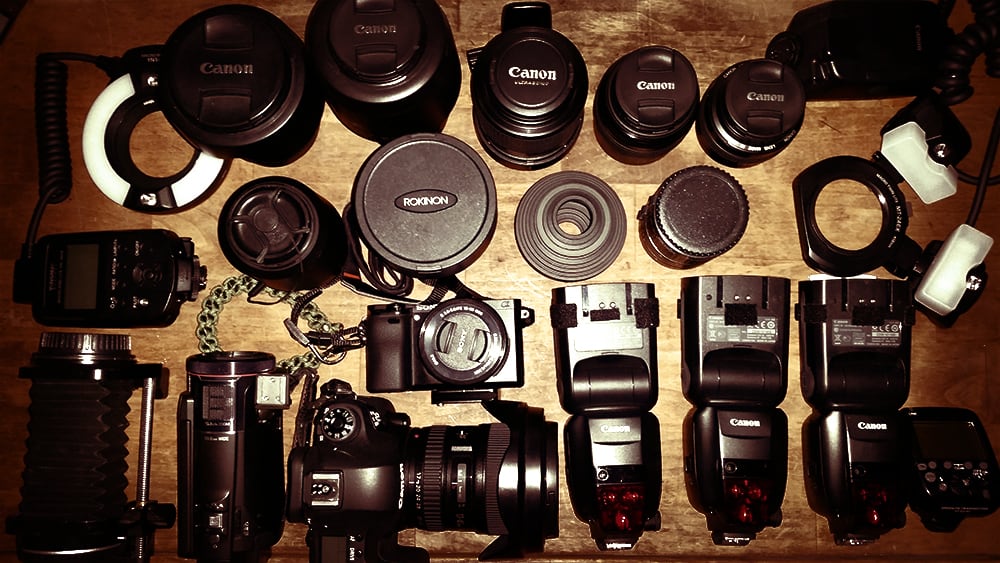
1. Does this new piece of gear adapt to my style of shooting?
This question is easier to answer than you think, but it can often be clouded by the faint smell of pheromones during the gear lust phase. To paint a picture, let me give you an example.
A few months ago the Canon EF 100-400mm f/4.5-5.6L IS II USM Lens hit the streets and boy were the photo blogs buzzing! I had nearly convinced myself that this was going to be an absolute necessity for me. I said, “Blake if you buy this you will shoot all kinds of awesome telephoto shots… get it… get it… what are you waiting for, you will be more pro if you get it… just do it… Scott Kelby just shot a football game with it…. you will too!!!”
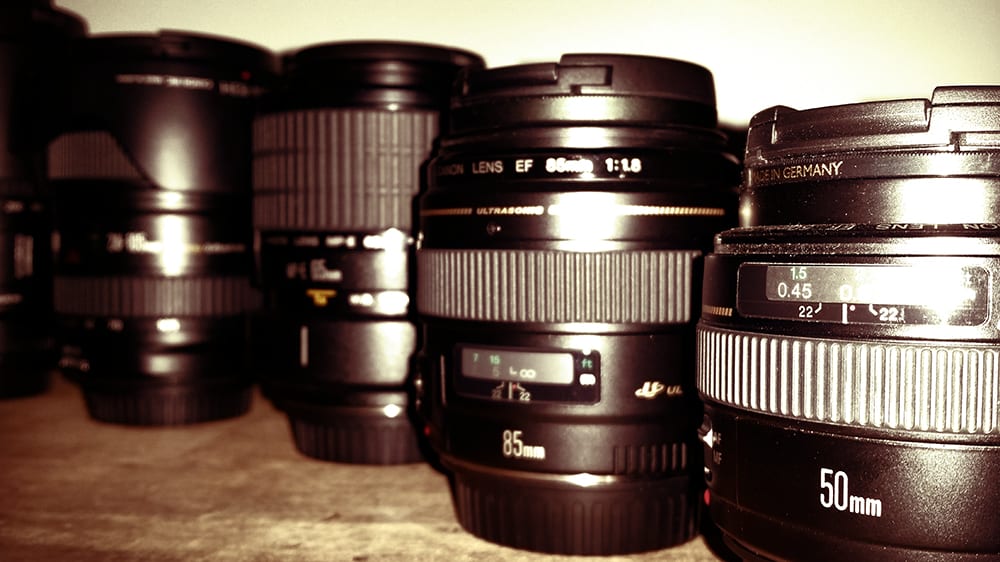
In an effort to see if I would really use this lens I ensured that my 70-300 lens was in my camera bag at all times for the following 4 months. To my lack of surprise the 70-300 never left the bag.
You see, we all have an innate style of shooting. I know myself and my style well enough now that this purchase would have been an impulse buy for me. I am a wide angle junkie, I rarely use telephoto lenses unless I am photographing tight portraits of my wife or children. The 100-400 is a beautiful collection of glass, but it just doesn’t match my style.
Which leads me to question 2.
2. Will the frequency of use justify the expense?
This is probably the hardest of the 3 questions to answer. Many times in the midst of gear lust we can convince ourselves that yes, yes, yes, I will use it all the time! I remember saying that about the Yongnuo Ring Flash I purchased that has been sitting on my shelf for about 3 months with one use… the tests I ran with it.
I kind of knew that going into the purchase as I love Macro Photography, but I don’t do it as often as I would like to. I knew going into that purchase that the frequency would be low, but the price was low also. Here is where a quick little picture equation can be helpful.
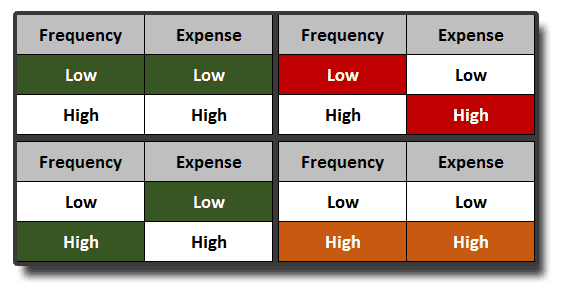
If you answer the question of Frequency vs Expense and it lands on GREEN, it is quite possibly a no brainer purchase.
If you answer the question of Frequency vs Expense and it lands on ORANGE, it is a purchase that may need some thought.
If you answer the question of Frequency vs Expense and it lands on RED, it is a purchase that may need a lot of thought and should only be approached if the funds are available.
If you are in the Red and still very much desire the product, check to see if there are favorable alternatives. Which leads very well into Question 3.
3. Are there any favorable alternatives?
This is a concept that is often overlooked due to brand loyalty. I hear it all the time, “I will only put Canon Glass on my Canon camera”. Allow me to let you in on a little secret… your camera will not explode if you put another brand’s lens on it… gasp…
I will say this. I was one of those people who said that exact phrase in the past. That was of course until I started looking at the Canon 14mm f/2.8 lens. I lusted for this lens for a very long time and was nearly on the verge of purchasing it until I searched for an alternative. I was in the ORANGE category on this. The lens is expensive over $2200, it required a lot of thought even though I knew I would get some great use out of it. So I did some soul searching and really thought about what I needed this lens for:
- A nice wide angle on a full frame camera for landscape photography.
- Fast Aperture for Astro photography.
After looking around I found that a lot of “Pros” were using the Rokinon 14mm f/2.8 which is nearly $1800 less than the Canon version. Do they have differences? Yes, the Rokinon is all Manual. However, I knew I would be tripod mounted with this lens for my intended purposes and I would more than likely be focusing with Live View, so Auto Focus is a moot point.
I decided to go with the Rokinon in the end as it was a very favorable alternative. Even after more research I found that many have compared the Canon directly with the Rokinon and have favored the Rokinon after several functionality tests.
>>Read all about the 14mm Rokinon here<<
4. Is this new piece of equipment that much better than what I currently use?
Often times we overlook the function of a product when we are googly eyed in lust over the latest and greatest. That is why it is imperative to know your camera and the lusted alternative very well. Of course this requires the knowledge of things like sensor size, ISO rating, Frame Rate, Full Frame vs Crop Sensor, dSLR vs Mirrorless and so on.
When you know these things, and you know them well, it makes it very easy to compare your current gear with what you lust for. I use three resources almost religiously when I am researching a new camera purchase.
1. DP Review on the Digital Photo Review website there is a compare tab. It can be difficult to find so I’ll link it >>HERE<< On this site you can compare two cameras (there is also another link for lenses) side by side. It is invaluable as it puts the items next to one another spec for spec. Of course, this should be taken with a grain of salt as they are simply the specs and not hands on comparisons. Other factors come into play. For instance, is the camera ergonomically friendly, how are the buttons setup, does it have 2 dials… etc
2. Snapsort is a decent website to check out for camera comparisons as well. I would not take their initial camera ratings for face value (the 1-100 rating at the top), but unlike DPReview, this site not only compares them side by side, it makes it a bit easier to understand which one is better than the other. Of course, you have to assess what is important to you in a camera and simply use it as a guide.
3. Amazon Reviews… yes I do read reviews from actual buyers. However, this is like gardening. For every beautiful flower there are 20 weeds. You have to read the reviews and weed out the bad ones and associate with the good ones.
A bad quality review is: “This product is awful…”. (this is a weed)
A good quality review is: “This product is not the greatest quality on the market. I tested it on my camera and the connection seemed instable. After several uses it only got worse.” (this is a flower)
A bad quality review: “I love this lens it makes me so happy…” (this is a weed)
A good quality review: “This lens is a welcomed addition to my wide angle collection. Its f/2.8 aperture makes low light situations easier to bare. However, the Chromatic Aberration can be high at low apertures (f/2.8) and sometimes I notice it is soft around the edges” (this is a flower)
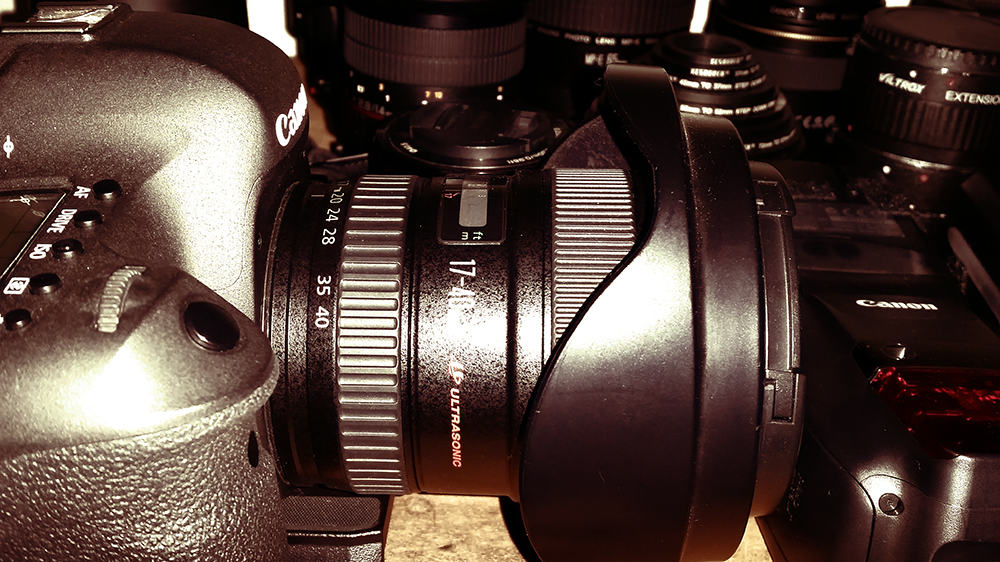
5. Will purchasing this lead to more expense in the long run? Am I ready for that?
You have to consider that any new purchase could lead to several more purchases down the road. I mentioned that I love Macro Photography. Last year I purchased the Canon 65mm f/2.8 MP-E 1-5x macro lens. I adore it, however, it is very difficult, if not impossible to use, without the Canon Twin Flash or a Ring Flash. The lens itself had a hefty price tag, but I also opted for the Canon Twin Flash which was almost equal to the price of the lens. Then I needed something to keep the camera steady, so I bought a shoulder stabilizer. Then I needed something to aid in taking the picture so I bought another remote trigger. Finally I needed some hockey stick tape to attach the remote trigger to the shoulder stabilizer handle.
So let’s take a look at how much this one lens purchase actually cost in the end:
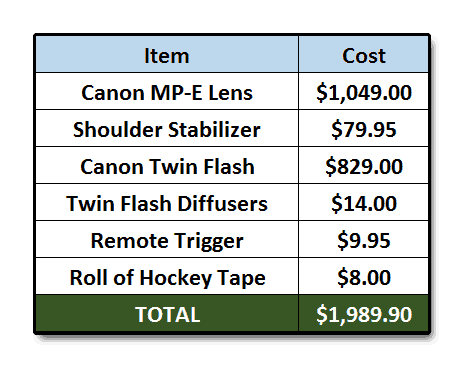
The Bottom Line:
I will leave you with this…
“It is not the expense of your gear that will make you a great photographer, it is your wealth of knowledge.” -Blake Rudis
Look at these two images below. One was taken with the Canon 6D with a 17-40 mm lens (total price $2200) the other was taken with a Samsung Galaxy S5 (total cost $99 with cell phone contract upgrade). Which photo came from which?

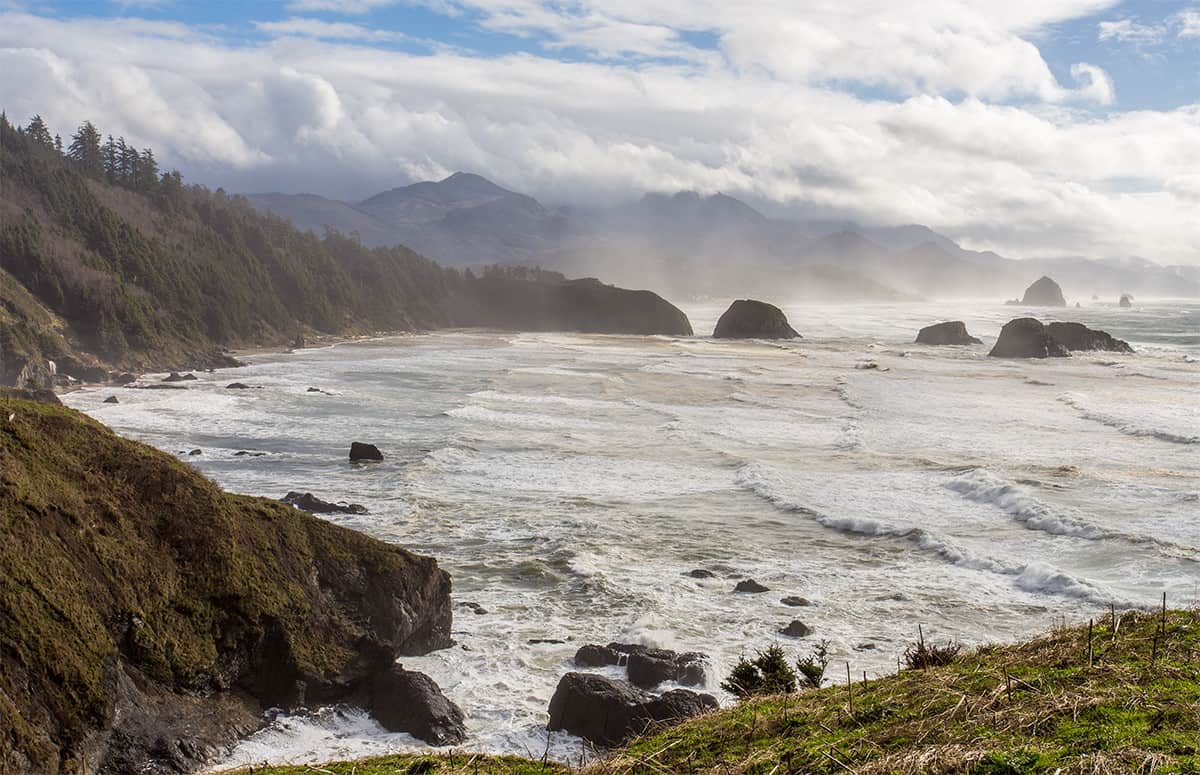
[hcshort id=”9″]









Good article and I like the little chart. The bottom photo looks like hit has more dynamic range, but I agree, it’s very hard to tell the difference and I spent last evening shooting a sunset with an iPhone 6+ and stabilizer to see what could be done and am pretty amazed.
I kind of figured this out for myself when I made the switch to micro four thirds because I had already shot with the ‘best of the best’ and then I ran across one of the top landscape photographer’s galleries and noticed images shot with everything from a Panasonic GX7 to Nikon D810 to PhaseOne medium format and I couldn’t tell the difference in quality. Asking him, he said he used the camera best suited to the output requirements. For me, it’s pretty easy to tell if I’m missing anything and what, if anything, would remedy that and then make the call as to whether the cost to fill that need is both within my budget and isn’t better served investing somewhere else.
Thanks Jeff. I would love to experiment with Medium Format. I considered renting one for a week or so just to see if I would like it. They seem like a huge purchase for something I am unsure of. Even in my film days I wanted to experiment with Medium Format.
In the days of film I shot mostly 35mm, but also had a Mamiya RB67, then later a Mamiya 645, all of them used in the field and hand-held.
Another really great source for camera/lens reviews is Gordon Laing’s Cameralabs.com. Gordon is on top of all the new gear. His reviews are highly detailed and loaded with sample images.
Nice I will look into that and book mark it! Thanks!
This was a very informative and well thought out. Sure makes sense to me when thinking about new gear. I will also be using the two links a lot.
They are valuable. You have to take the Snapsort one with a grain of salt. It helps to compare them side by side, but the grading scale they have is poor. And sometimes they will say one camera wins based on price or weight, which for us is kind of silly.
Great article, Blake, and your humor/writing style is always funky and entertaining…and always spot on. Just went through the new gear lust process, received some input and perspective from you (thank you very much), and pulled the trigger. Am very happy with my purchases, and am delighted to discover that I fall within the appropriate boxes on your chart for my decisions. Keep up the good work for those of us out here who really, truly profit from your wisdom!
Thanks, Jim! I try to write as if I am talking to you, it makes it easier to convey my thoughts.
I appreciate all of your cordial comments. That box chart just came to me as I was writing this. It made sense! I can’t tell you how many red purchases are sitting on my shelf right now. haha, wish I would have had this sooner!
Shutter pushers, i.e., “photographers” talk about equipment because it’s something they can reach out and touch. There’s nothing like gear envy.
Artists talk about emotions, what causes them to push the button, and the sentiment they want to convey.
I’m working hard at trying to become an artist.
Ooh, that was pretty deep! Kinda like a conversation we had in one of the Facebook groups the other day. The question was about taking or making photos. I felt the true art was in the making. During the taking of a photo our experience and intuition come out, during the making, our mind comes out.
Very similar sentiments there.
I too been in the lusting phase for the Sony a7r, after buying the a6000 last year. Which at the time was the latest and greatest. Also, toyed with the idea of dumping and selling my Nikon slR and going totaly Mirrorless. But, came to the same conclusion as you. It’s not the camera but the photographer and their mastery of photo processing software. After getting use to the a6000 I’ve been using it more than the Nikon. When more lenses come out for Sony, I may eventually switch.
Which brings me to another point: I’m having the same problem with software and having too much of a good thing leads to confusion. What to use when? OnOne sits idle now that I’m using Topaz. Where does the Nik collection fit in and other various programs I have? Not to mention my must haves: PhotoShop and LightRoom.
Nice article, Blake. Thanks!
Oh my, Mikki. Both G.A.S. (Gear Acquisition Syndrome) and S.A.S. (Software Acquisition Syndrome) at one time. You may need serious help. 🙂
I don’t know if there is enough help for those two, unless they start putting Perfect Effects in the Lens…
You know this is a great point. Vinny, from the HDR Insiders, brought this to my attention. Next week’s Tuesday post will be about software. I am going to put out some blatant truths about software and spell out where it is truly needed. Of course, this will be in regards to my workflow and personal taste, but that will be in there as well.
I generally agree, Blake, but there’s a little food for thought. Two more variables in your equation (even though I know you hate math).
The first is experience. If you are new to photography and haven’t yet “found yourself” as an artist (i.e., you are still experimenting and shooting everything from macro to portraiture to landscape to wildlife to highspeed to astro and more), then low-low probably is green, and high-high should probably be red. You just don’t have enough experience yet to know what is going to have and retain a high frequency of use. And if you only have one lens…then it’s use is going to be 100%. If you are a seasoned photographer and, like you, know what you like to shoot and have a historical base of what focal lengths and apertures you use (something, by the way, that Lightroom can help you with since you can get a count of your images by lens, focal length, aperture and more), then low-low is probably red and you still need to soul search high-high (If you are a for-hire professional, will you get a return on investment; if you are an enthusiast, will you get sufficient personal satisfaction?).
The second added variable is quality. My experience is that quality and frequency of use are entangled. I bought a 100-300mm Panasonic zoom (200-600mm full frame equivalent) for my Olympus OM-D to use for wildlife. After a fair number of disappointing tries at bird photography, it rarely came out of the bag. Then I purchased the recently released Olympus 40-150mm f/2.8 Pro and 1.4 teleconverter (giving me a range of 210mm, or 410mm full frame equivalent, less than the Panasonic). First time out, and every time out since, I’ve gotten wonderful bird shots, and the lens is getting used frequently. Now admittedly, I’ve gotten better technically since I purchased the Panasonic, so the improved results are not just the lens. But I’m convinced that the focus speed and sharpness of the Olympus glass has had a big part.
I agree 100%! Those are great points to add to the discussion. I would say that in general the chart works 🙂 There are always variables in any system and the ones you bring up are important.
Thanks for adding your experience there. I am sure if I bought the 100-400 I would use it, because I do not like the 70-300 Canon (non L).
You took the words right out of my mouth. In preparation for a trip to Kenya, I just watched a video on safari photography which was made by a VERY famous wildlife photographer. After ONE safari trip (amazing for someone internationally known for 30 years), he recommended that you leave the wide angle stuff at home (some of the beautiful images in Africa are landscapes) and just take a 80-400 and (drum roll please) a $18,000 800mm Nikon. If you are a full time birder, this might make sense but based on weight restrictions and lack of ability to use a tripod, let alone a gimbal, this is a joke. I guess if you are on a manufacturer’s dole, these are the things you do. I’ll be taking my 150-500 Sig and I’m confident I’ll have plenty of good images.
ouch! My car… both of my cars don’t equal $18,000… wow! I would have to say red/red on that one 🙂
Thanks for this, Blake. I’ve been going through the exact same thing. (And as a cycling enthusiast I’m very familiar with the phenomenon known there as “bike lust.”)
I actually bought the Sony A7 II. But I had recently sold my LP collection of about 2500 records and wanted to treat myself with some of the money. I had checked out a friend’s A7r and was very impressed just by the feel of it. So I plunked down two grand for the camera and kit lens and have no regrets; it’s a great camera. However, when I talk with my friend (who has picked up several of the very expensive new Sony FE lenses) or read comments at DP Review, I start to feel like using the kit lens is cheaping out and that I should have some of these lenses that the pixel peepers are gushing about. Thankfully (or not) I have a wife who is, shall we say, thrifty in her attitudes and keeps my gear lust in check.
So far my solution has been to get an adapter to use my pair of Canon APSC lenses with the A7 and to go bargain hunting on eBay. I should note that for the past number I’ve years I’ve mainly used a Canon 18-200 as my go-to lens on a Rebel T2i. This has not prevented me from winning numerous local awards and having my images exhibited in galleries and other venues.
Do I really want to shlep around a lot of lenses? Well i AM curious to see what various primes and others will do. A couple weeks ago I got nine old manual focus, film-era lenses on eBay that work with a cheap Konica AR mount adapter. I spent $400 for the whole lot. I figure that if I end up using two or three of them I’ll be ahead of the game; plus I can resell the rest. I was out of town (where I only ended up using the kit lens, even though I took the 18-200 with me) for a while, but plan to put some of these through their paces. I think it’ll be fun. And cheap. ;-}>
That’s awesome! I just picked up an old Konica from a Thrift store for $12 it came with a 52mm f/1.8 lens!!! I want to get an adapter for it to try it on my Sony a6000 but don’t even know where to begin!
I like your idea there with the old manual lenses. They were great pieces of glass in the past and should not be left behind. They can certainly be used on newer DSLR’s without AF capability, but sometimes the manual is more fun!
This ought to work fine, Blake: http://www.amazon.com/exec/obidos/ASIN/B004EDDBCS/associatizer-20/
BTW, back on the original topic, I took an iPhoneography class last weekend and had a blast playing with some apps I hadn’t tried before. I get lots of enjoyment from shooting with my iPad Mini. You can’t blow those shots up real big, but they look great online.
I, too, have suffered this same syndrome. What cured me was running out of money to spend on new bodies and lenses. i stupidly spent tons of money on stuff that sits in my storage bags and boxes. I find that a 6D, 24-70 2.8 canon and a 70-200 2.8 Sig is 99% of all my photo taking. A 1DX or the new sony won’t make me a better photographer. So i have settled down the last 6 months and concentrated on learning and upping my photo quality. That is what works. I am improving..and it comes from shooting, shooting and more shoting. This article is awesome. Problem is, we all have to learn the hard way…but gear syndrome is hard to overcome. i love your articles, tutorials, etc….Thanks a zillion!
Thanks for adding to the conversation here. I once thought that the camera made the photographer, that was before I had the knowledge. Knowledge makes us better the more we have the better off we are. Knowledge is everywhere and given freely on the net these days. It is a great time to live in.
I have thought about the 24-70 but I am like a junkie for super wide… I can’t get enough!
Nice post, Blake. It is ironic that people equate professional with gear. In a business as a professional, you only buy a new equipment if it has a significant rate of return. You cannot afford to continually buy new equipment. That behavior in the business world would identify you as non-professional.
I might suggest you add to your extra equipment calculation the spousal reciprocity factor which can run quite high, sometimes even multiples of the new lens cost.
“In a business as a professional, you only buy a new equipment if it has a significant rate of return.”
Very true! I like the way you put that. I have to imagine myself having an interview with the Sony a7r….
“So Mr. Alpha, I see you have a long lineage of excellent family members, and your specifications truly speak for themselves. My questions,
what can you do for me that a Canon can’t?
Where do you see yourself in 5 years? 10 years?
I am looking for longevity in my company. Where do you see yourself???”
What about selling old ecquipment. We get nothing from large retailers. What I am selling probably one of us is interested in purchasing at a price much better for us than going through large retailers. Blake can we have under your Web umbrella , a place to offer?
I have had a ton of success selling used equipment via Amazon. I sell it in the used section and it goes within a few weeks. When I went from Olympus to Canon I sold every piece of glass I had at a very reasonable price. The way it works is you sell to someone using Amazon as the hub for the sale.
When someone buys it you send it directly to them.
Hi Blake. This was such a timely subject for me as I am coming out of a bad ‘gear lust’ period. I called February my ‘stupid month’ as I kept making purchases and kept returning those items in my quest to get more reach than my 70-300mm lens on my Canon 6D could give me. The Tamron 150-600 was too heavy, the Canon 100-400 too expensive, the 1.4x converter didn’t autofocus, etc. I did end up with a refurbished Canon 7D body which increased my reach to 480mm and saved myself a lot of money. I would like to use your chart the next time gear lust strikes but I don’t understand how to read it. You have Low Low in several lines. Same for High High. Can you explain how to use it?
Sure! Ask yourself 2 questions. What will the frequency of use be? High or Low.
Then ask how Expensive is it? Is it High dollar or Low Dollar.
Once the Frequency and expense have been determined plug the answers in on the chart.
If it shows up green it is probably a decent purchase (without thinking variables)
If it is Orange consider some thought prior to the purchase.
If it is Red, seriously consider the purchase before buying.
Linda, I was scratching my head trying to figure out the chart too. What helped in deciphering it was matching up the colors.
Top left box (green): If frequency of use is low and expense is low, OK.
Bottom left box (green): If frequency of use is high and expense is low, OK.
Top right box (red): If frequency of use is low and expense is high, avoid.
Bottom right box (orange): If frequency of use is high and expense is high, proceed with caution.
I always hated charts and graphs on tests. Mary.
Thanks, Mary. Your explanation plus Blake’s reply has made the chart more understandable. Now I’ll use the chart plus some self control in the future.
The bottom one is the Canon (??)
Blake, I really like your clean, complete, and straightforward explanations. Thanks for what you have shared in the free workshops. I noticed very few people actually answered your question–I know you have processed these pictures slightly since you have resized them, but I still suspect that the bottom pic is from the Canon and top from the cellphone because I enlarged both and compared them and found much more noise in the top pic and more detail and dynamic range in the bottom.
And that makes a point about gear and quality, and there is my dilemma. I’ve been using Lumix superzooms for digital photography for several years. As an old film photographer, I thought those pix looked great on my computer screen and projected well in presentations. But when I began posting them on 500px, they were criticized and some even rejected, for technical details. I was really stunned, until they finally made the suggestion that all submissions be previewed at 100%, and I went back and checked mine. Whosh! Those pix were really grainy when viewed that way! Using tips and processes from you and other tutorials, I’ve learned how to improve some of those pix, but at base, the initial quality is vitally important.
So the big gear question is “What is the baseline camera body/lens requirement for obtaining professional high quality results which can then be enhanced by good post-processing?”
I agree Blake. After all, the best camera is the one you have in your hand when you need the most. Same goes with many lenses too, people debate over 50mm 1/4 is better or 50mm 1/8 is. If you are not going to use that extra stop you get with 1/4, it does not justify extra $300, which you can use for something else.
On the other hand, if the usage is not that much, there are so many companies allow you to rent the gear for any particular shoot, it has virtually eliminated the need to own an expensive gear.
Great article that I plan to forward on to a few friends. It has become my habit in the past year or so to regularly rent lenses. No need to buy. I can plan a project, reserve and rent a lens (and other accessories) without the cash outlay. This practice lets me use lots of different lenses and become familiar with their features and characteristics. When thinking about using lenses I have become much more critical and pragmatic. My experience in photography is gaining a great deal of maturity for it. So my advice is to don’t worry, rent and enjoy photography.
So glad I found your blog and will not add it to my reading list! This article was perfect and your Cannon vs Rokinon comment hit it right on as I am shopping right now for those same options – landscape and night photography. Yes I’m trapped in that “only Canon glass on my Canon gear” but need to be realistic in my experience, what I’m using the photos for and well – cost! Thank you so much!